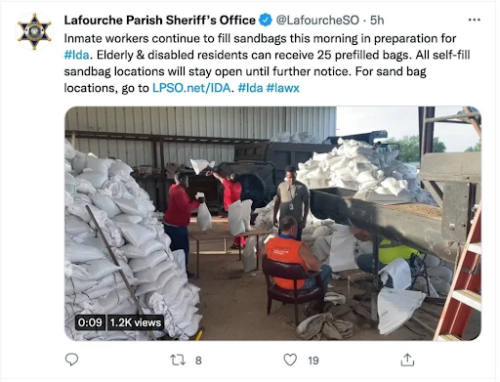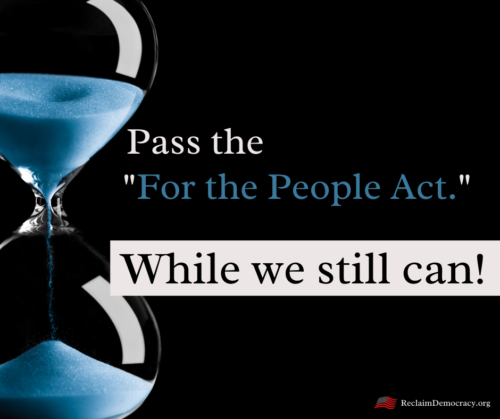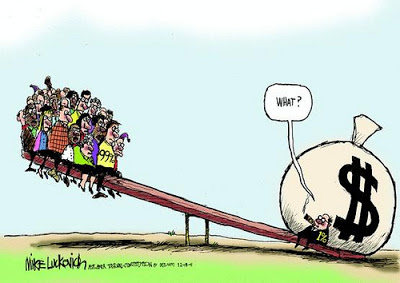By Shaila Dewan
First published November 22, 2022 in the NY Times
Matthew Shelton was contending with diabetes and periodic substance abuse when he moved in with his sister outside Houston in order to get his life together.
Three months later, facing an old criminal charge of driving while intoxicated, he turned himself in to the Harris County Jail one day in March with a supply of the insulin he relied on to stay alive.
After two days, he told his family that no one was allowing him access to the insulin: He was trying to manage his illness by discarding the bread from the sandwiches he was served. He was alone, frightened and cold, he said.
His mother, frantic, tried repeatedly to phone the jail but could not reach anyone. “We sent money for him to buy socks and ChapStick, and he never bought them,” she said.
Three days later, Mr. Shelton, 28, was found dead in his cell, after having slipped into a diabetic coma.
He was one of 24 people who have died this year in the jail, located in Houston, a far higher death rate than what is reflected in the most recent statistics for jails around the country.
Houston, whose jail has reached its highest population count in over a decade, is far from the only city where jails have become more fatal. Deaths have spiked in cities across the country, including New York, Oklahoma City, Seattle, Pittsburgh and Louisville, Ky. California, Texas and Georgia have also recorded statewide increases in deaths. Covid-19 accounts for only part of the rising toll — suicides and fatal overdoses have also increased in some places.
Jail officials blame a host of factors, including crowding, staff shortages, mental health issues exacerbated by the pandemic and the repurposing of beds in solitary confinement, once available to isolate violent detainees, that now must be used for quarantining the ill.
But jails have also in many cases violated minimum safety standards or failed to provide adequate medical and mental health care for their inmates, about two-thirds of whom are awaiting trial and presumed innocent.
The Houston facility was cited by the state in September for holding new arrestees in its crowded Joint Processing Center for as long as 99 hours before moving them to a permanent cell. The limit is 48 hours.
In Los Angeles, a federal judge granted an emergency order in September after the American Civil Liberties Union provided evidence that people with mental illness were being chained to furniture for days or left to sleep on concrete floors without access to toilets.
In Louisville, a woman killed herself in jail after being held for 18 hours in an attorney interview booth with no mattress, toilet or running water.
Much of the recent attention on jails has been focused on Rikers Island in New York, which is under threat of a federal takeover after suicides and frequent reports of uncontrolled violence.
But there are indications of a much wider crisis whose dimensions are not yet fully understood. The Justice Department has failed to fulfill a 2013 congressional mandate to conduct a comprehensive count of all deaths in custody, at one point acknowledging that its new system had recorded only 39 percent of deaths in local jails.
The most recent national figures available, from 2019, show that jail deaths were rising even before the pandemic. From 2000 to 2019, jail deaths per capita increased by 11 percent, to 167 per 100,000. In 2019, suicide was the leading cause of death. The number of drug- and alcohol-related deaths was the highest ever recorded.
The nation’s jails have little broad oversight but instead are local facilities, most commonly controlled by elected sheriffs. They held about 650,000 people last year, according to Jacob Kang-Brown of the Vera Institute for Justice, a group promoting prison reform. The jail population declined substantially at the beginning of the Covid-19 pandemic but has since begun to rebound, he said.
In Houston, there was another death Tuesday morning, when a 45-year-old man succumbed to injuries sustained in an assault by other jail inmates. That followed the death of a 27-year-old man who was found hanging in his cell last week. Two of the other deaths this year were suicides, including a man who was moved to a padded cell after a suicide attempt, then rammed his head repeatedly against the walls, the door and a metal grate, causing fatal injuries.
Jason Spencer, the chief of staff for Sheriff Ed Gonzalez, whose department runs the jail, said that the death rate, currently at more than 200 per 100,000 inmates, can vary widely from year to year.
At least a dozen of those who died this year were in their 20s, 30s or 40s. More than half had a history of mental illness or had been declared incompetent, according to Sarah V. Wood, the general counsel for the public defender’s office.
While an autopsy attributed Mr. Shelton’s death to a natural cause, diabetic ketoacidosis, his family insists that it was entirely preventable, a result of the jail’s failure to provide him with insulin.
“This is something that didn’t need to happen,” his mother, Marianna Thomson, said. “This is just carelessness. They didn’t care.”Marianna Thomson holding a locket containing the ashes of her late son, Matthew Shelton.Credit…Brandon Thibodeaux for The New York Times
Mr. Spencer said the death occurred not long after the county’s public health care provider, Harris Health, took over the responsibility of providing medical care at the jail and referred questions there.
Bryan McLeod, a spokesman for Harris Health, declined to comment because Mr. Shelton’s family plans to sue. He also declined to discuss whether the jail’s medical providers were adequately staffed.
The deaths this year in Houston come amid a host of complaints about dangerous conditions in the jail. In a lawsuit, several dozen detention officers describe staffing shortages so severe that drug use and assaults were rampant, nurses were unable to administer medicine and officers, often denied meals and bathroom breaks, sometimes urinated into plastic bags.
“The jail is in disastrous shape right now,” said David Batton, the legal counsel for the union that represents jail employees. He faulted the county for failing to adequately fund jail operations. The lawsuit was dismissed last week.
Mr. Spencer said the county had approved a staffing increase of 100 detention officers, but that more than 100 positions remained unfilled. He said the problem was much larger than Houston; the jail’s death rate, he said, was in line with that of the state’s other large jails.
Many jails have seen overcrowding in part because of court backlogs stemming from the pandemic, which slowed or halted hearings and trials. But Houston’s backlog dates back to Hurricane Harvey in 2017, when the courthouse was damaged. The local courts now have more than 41,000 pending felony cases.
Even if no new cases came in, it would take more than a year to clear the old ones, according to a 2020 analysis by the Justice Management Institute, a research and training group. The institute recommended dismissing all nonviolent felony cases more than nine months old, pointing out that most of the accused would not have been sentenced to time behind bars.
But Kim Ogg, the Harris County district attorney, has declined to dismiss cases in bulk, saying that each should be considered individually. “We can’t neglect our prosecutorial duty, and we’re not going to tell victims that their crime doesn’t count,” said Dane Schiller, a spokesman for Ms. Ogg.
Advocates for better jail conditions also blame the overcrowding on a pandemic-era executive order from Gov. Greg Abbott, which later became state law, aimed at blocking the release of detainees on cashless bail.
The law, S.B. 6, prevents the release of any inmate with a previous conviction for violence or threatening violence, no matter how old, without requiring them to pay some bail money.
It has worked against a parallel effort to funnel people with serious mental illness into treatment instead of jail, without requiring them to pay for release, said Krish Gundu, co-founder and executive director of the Texas Jail Project, a watchdog group. She said that S.B. 6 undermines the Sandra Bland Act, named for a woman who could not afford the $500 needed to post bond after a traffic stop and hanged herself in a Texas jail.Twenty inmates have died this year in Harris County Jail in Houston.Credit…Brandon Thibodeaux for The New York Times
Because many acts associated with mental illness, such as spitting on a police officer, are categorized as violent, hundreds of poor defendants who need treatment must now remain in jail while they are on the long waiting list for a community psychiatric bed, Ms. Gundu said.
In Harris County, four out of five detainees have a mental health indicator such as a diagnosis of major mental illness or previous treatment with psychiatric drugs, according to the jail’s dashboard, putting an intense strain on the system.
One woman who had no prior convictions was arrested in January 2020 on charges of possessing less than a gram of meth, almost certainly not enough to earn a prison sentence.
The woman was repeatedly referred to the jail’s mental health unit when guards witnessed her doing things like walking naked, drinking out of toilets and assaulting or being assaulted by others. But each time, she was swiftly returned to the general population. She spent more than two years moving in and out of jail, diversion programs and mental health treatment.
At some point, jail officials became aware that she was pregnant. In May, she gave birth in her cell without medical assistance. How that happened is unclear: Mr. Spencer said she had been checked on once every hour, as required.
When the newborn was discovered, baby and mother were taken to the hospital, where the mother remained under the supervision of two jail guards. A judge at that time declared her incompetent to stand trial and “suffering severe and abnormal mental health, emotional or physical distress.”
Despite her condition, she was permitted at the hospital to interact with her infant daughter and is now charged with stomping, kicking and striking her, though the baby survived.
Advocates for better jail conditions said the jail had failed to treat her severe mental illness, failed to adequately monitor her pregnancy and failed to protect the baby.
The woman’s lawyer, Staci Biggar, did not respond to requests for comment.
This year’s death toll comes on the heels of several notorious cases last year. In one, Jaquaree Simmons, 23, was beaten to death by guards who then failed to document their use of force, according to a subsequent investigation. The jail fired 10 guards, and the case will soon be presented to a grand jury.Fred Harris after his high school graduation in Stafford, Texas, in 2020.Credit…Mr. Harris in the hospital after being beaten and stabbed in Harris County Jail, which ultimately led to his death in 2021.Credit…
In another, Fred Harris, a 19-year-old, cognitively disabled inmate who weighed only 98 pounds, was placed in a holding tank with a 240-pound detainee who was known to be violent and was required to have an escort when outside his cell, according to a lawsuit filed by Mr. Harris’s family. Mr. Harris was stabbed and beaten to death, and his cellmate has been charged with murder.
Asked if the jail bore any responsibility, Mr. Spencer said, “That’s hard to say. I mean, those kinds of things, you know, sadly, have always happened in jails and prisons.”
But Mr. Harris’s mother, Dallas Garcia, said jail officials had failed to provide basic protections for her son. “I don’t want anyone else to experience that,” she said. “I don’t want there to be a lack of human decency in these places.”
ⓒ 2022 New York Times
FAIR USE NOTICE: This site may contain copyrighted material the use of which has not always been specifically authorized by the copyright owner. Such material is made available to advance understanding of ecological, political, human rights, economic, democracy, scientific, moral, ethical, and social justice issues, etc. It is believed that this constitutes a ‘fair use’ of any such copyrighted material as provided for in section 107 of the US Copyright Law. In accordance with Title 17 U.S.C. Section 107, this material is distributed without profit to those who have expressed a prior general interest in receiving similar information for research and educational purposes. For more information go to: http://www.law.cornell.edu/uscode/17/107.shtml If you wish to use copyrighted material for purposes of your own that go beyond ‘fair use’, you must obtain permission from the copyright owner.





